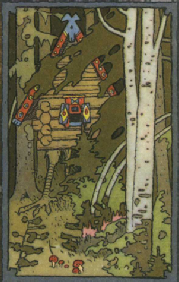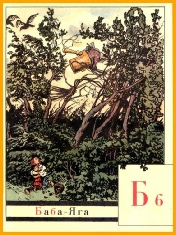



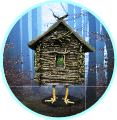
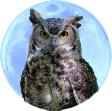

Baba Yaga: My Favorite Witch


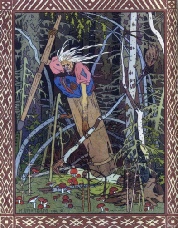
Some tales feature three Baba Yagas. In my series they are sisters: Starshaya (Eldest) Yaga, Baba Yaga (the middle one), and Mladshaya (Youngest) Yaga. In those stories someone on a quest visits each of them in turn. After giving the correct ritual responses to questions such as “Are you doing a deed or fleeing from a deed?” and sometimes completing a test of skill (usually of a household nature), the person is given a ball of wool. By tossing it on the path and following wherever it leads, the one seeking aid can reach the home of the next Baba Yaga. In these cases it is the last one visited who succeeds in helping.
The Baba Yagas often seek information by summoning birds or winds or other natural forces. “Baba” means “old woman” (the derivation of “Yaga” is unclear). Baba Yaga has typical fairy-
Baba Yaga often aids those who ask her help politely (observing all the traditional conventions) and rewards those who successfully fulfill the tasks she sets. At other times she appears to be a villainous and voracious hostess (though my Baba Yaga insists that was her sister Starshaya Yaga). Despite being occasionally tricked into crawling into her own oven with temporarily disastrous consequences, she is nonetheless always available to help the next person who seeks her aid.
Baba Yaga’s most well-
Baba Yaga lives in the forest in a hut that runs around in a circle on chicken legs when someone tries to enter until the proper words make it stop (“Hut, hut, stand with your back to the forest and your front to me,” in case you ever need to know). Her hut is usually surrounded by a bone fence and a gate with a skull (or several) with snapping teeth (see the first and second illustrations to the right by Ivan Bilibin from Aleksandr Afanasyev’s classic book of fairy tales, including the chicken-
Baba Yaga sends out three horsemen daily (Bright Day, Red Sun, and Black Midnight). She has various servants, such as invisible hands that wait on her, a not always loyal cat, and a chicken who yells a warning when someone tries to steal something from her (which happens rather frequently). It’s no wonder that she’s suspicious of visitors, although she is occasionally tricked into demonstrating how to get into the oven, à la Hansel and Gretel. Like the giant in Jack and the Beanstalk (fee-
Baba Yaga is featured in various cartoons, comics, games, and novels, and movies. M. P. Mussorgsky’s Pictures at an Exhibition movement no. 9 is “The Hut on Fowl’s Legs.” She is so well known in Russian culture that she was used as the illustration for the letter B in a 1909 alphabet book (see the illustration on the bottom right, in which she flies in her mortar). (Another illustration showed a magician and a giant: fairy tale elements were important).
The classic scholarly study is Baba Yaga: The Ambiguous Mother and Witch of the Russian Folktale by Andreas Johns (not for the faint of heart: it may tell you more than you want to know). Baba Yaga: The Wild Witch of the East in Russian Fairytales (translated by Sibelan Forrester) contains several tales and some background.
Baba Yaga is lovingly treated in my own fantasy Elsewhen and is the star of my new series the Baba Yaga Chronicles (book 1, Hexed in Texas, is available at Amazon; book 2 coming soon). In this series I imagine how she and her older and younger sisters (Starshaya and Mladshaya) deal with the modern world and competing magics.
A few websites to get started:
http://www.mythinglinks.org/BabaYaga.html
